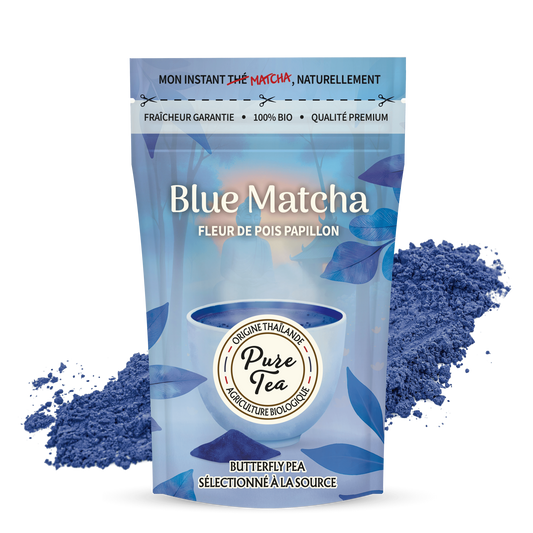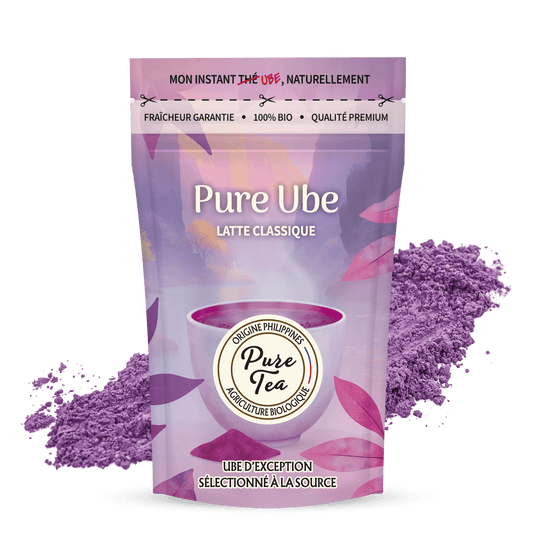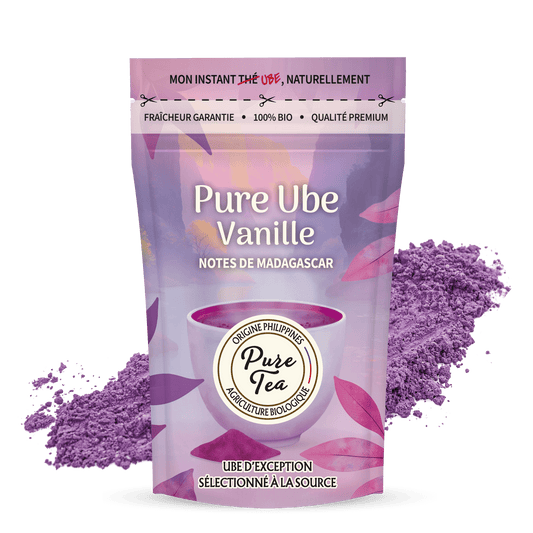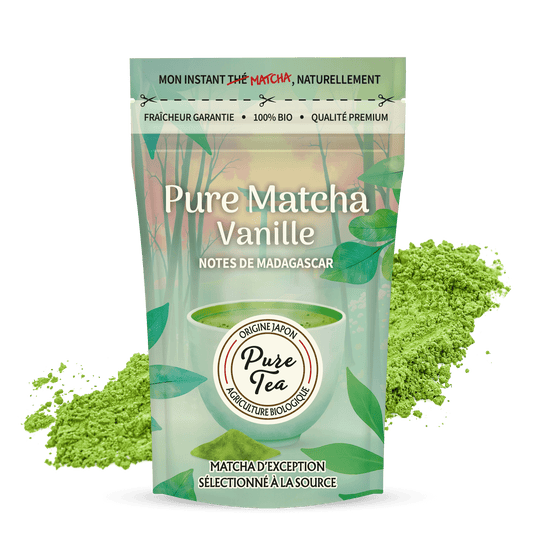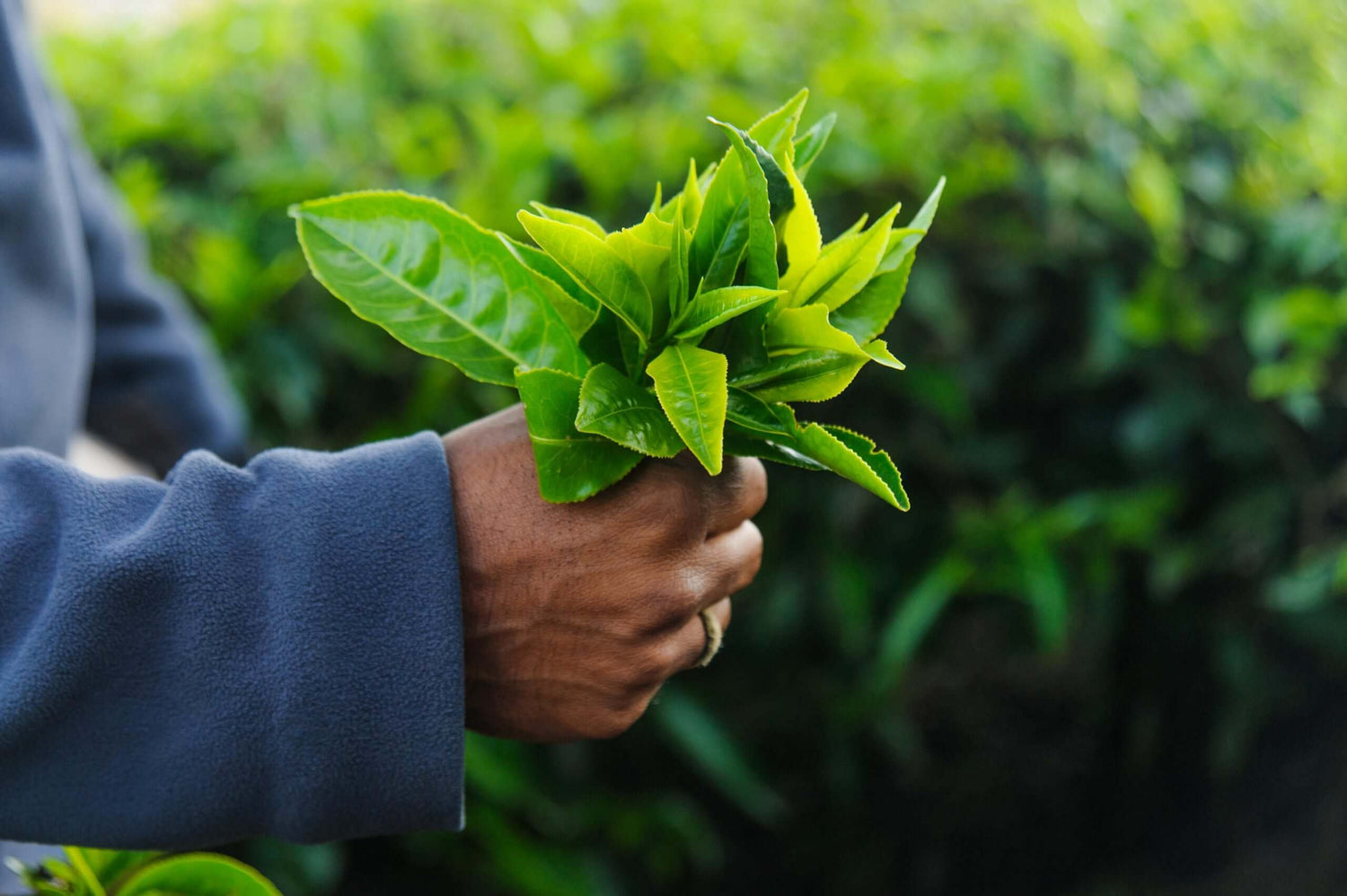Ube powder, the purple yam from the Philippines, is revolutionizing creative beverages with its nutritional benefits.
- Authentic origin: traditional Bohol tuber processed without artificial coloring
- Nutritional richness: antioxidant anthocyanins, dietary fiber, and naturally concentrated essential minerals
- Culinary versatility: a natural caffeine-free alternative to matcha for lattes and baked goods
- Economically accessible: a superfood that's affordable compared to premium alternatives on the market
For the past few years, I’ve watched with fascination as new superfoods from distant places have emerged. Among them, Filipino ube especially caught my attention with its mesmerizing purple color and exceptional flavor profile. This purple yam, ground into a fine powder, is reshaping the art of creative drinks and colorful desserts. Far more than just a culinary trend, this tropical tuber is a natural alternative to artificial coloring while providing remarkable nutritional benefits. Its sweet flavor, subtly blending vanilla and hazelnut, appeals to even the most discerning palates.
The Filipino origins of ube: from traditional tuber to modern powder
Ube in traditional Filipino culture
The Philippine archipelago has been cultivating this purple root for centuries, long before it took over Western social media. In local cuisine, purple yam holds a central place, especially in iconic dishes like Ube Halaya, a silky, amethyst-hued jam. This traditional dessert is served at major family and religious celebrations, reflecting the cultural importance of this tuber.
Halo-halo, a colorful frozen dessert considered a symbol of Filipino cuisine, also incorporates this purple-hued root in various forms. Filipino families pass down the secrets of preparing these delicious treats from generation to generation, preserving a culinary tradition rich in authentic flavors.
This tropical yam is more than just an ingredient—it’s a true culinary treasure. Local festivals regularly celebrate the harvest of this precious tuber, strengthening community bonds around this age-old agricultural tradition.
Growing regions and terroir
The Bohol region stands out as the birthplace of ube Kinampay, a variety renowned for its superior quality and exceptionally high anthocyanin content. These unique geographic conditions create a singular terroir, where the humid tropical climate allows this colorful root to thrive.
| Optimal weather conditions | Values |
|---|---|
| Average annual temperature | 63–73°F |
| Sunlight hours | Over 1,500 hours/year |
| Soil richness | Natural selenium |
| Humidity | Mild and slightly humid climate |
Volcanic soils naturally enriched with selenium give Philippine yam remarkable nutritional properties. This mineral richness is directly reflected in the final powder, offering additional health benefits.
Other provinces like Laguna and Quezon also contribute to national production, but Bohol’s reputation remains unmatched. Local farmers continue environmentally friendly cultivation methods, preserving the biodiversity of these fragile ecosystems.
- Careful selection of tubers based on ripeness
- Hand-harvested to preserve root integrity
- Careful sorting to remove defective specimens
- Fast transport to processing centers
- Constant quality control throughout the process
From field to powder: the transformation process
Turning fresh ube into a fine powder requires significant technical expertise to preserve all the flavor and nutritional qualities of this superfood. The process begins with carefully cleaning the freshly harvested tubers, removing any traces of soil or impurities.
Low-temperature drying is the crucial step in this transformation. This gentle method preserves the anthocyanins responsible for the natural purple color, as well as the volatile aromatic compounds that give ube its signature vanilla flavor. Controlled temperatures prevent the breakdown of heat-sensitive vitamins.
Grinding into a fine powder is done using specialized mills that ensure uniform particle size. This final step determines how easily the powder dissolves in liquids, which is essential for achieving perfectly smooth and colorful drinks.
- No artificial coloring added
- Naturally Preserved Aromas
- Preserving antioxidant properties
- Preserving nutritional value
Nutritional profile and benefits of ube powder
Detailed nutritional profile
As someone passionate about nutritional creations, I particularly appreciate the exceptional richness of this purple yam in essential nutrients. Its balanced composition makes it a complete superfood, capable of significantly contributing to daily recommended intakes.
| Nutritional components | For 100g of powder |
|---|---|
| Energy | 356 kcal |
| Proteins | 7.1g |
| Fats | 1.1g |
| Carbohydrates | 73.5g |
| Dietary fiber | 11.6g |
This tropical root is naturally rich in essential minerals like copper, which helps protect cells from oxidative stress. Iron supports normal oxygen transport in the body, while zinc helps the immune system function optimally.
The potassium present helps maintain normal blood pressure, and the calcium supports bone strength. The magnesium, which is especially abundant, helps reduce fatigue and supports normal energy metabolism.
- Vitamin A for normal vision
- Vitamin B6 for protein metabolism
- Vitamin C to boost natural defenses
- B vitamin complex for energy
Anthocyanins and antioxidant properties
The natural anthocyanins in ube are much more than just a coloring pigment. These phenolic compounds belong to the flavonoid family, known for their powerful antioxidant properties. Their exceptional concentration in this purple yam makes it one of the richest plants in these protective molecules.
These natural antioxidants neutralize free radicals responsible for premature cellular aging. Their protective action extends to cell membranes, preserving tissue integrity against daily oxidative stress. This natural protection helps maintain optimal overall well-being.
The bioavailability of these antioxidant compounds remains excellent in powder form, allowing the body to absorb them efficiently. Unlike synthetic antioxidants, these natural molecules work synergistically with other nutrients present in the tuber.
- Cellular protection against oxidative stress
- Cardiovascular system support
- Contribution to cognitive health
- Supports flexibility of blood vessels
Metabolic and digestive benefits
The moderate glycemic index of ube powder offers significant advantages for blood sugar regulation. This feature enables a gradual release of glucose into the bloodstream, avoiding sharp spikes that often lead to cravings and energy crashes.
The abundant dietary fiber promotes regular bowel movements and beneficially nourishes the microbiome. The resistant starch naturally present in this tuber ferments in the colon, producing short-chain fatty acids that are good for intestinal health.
This controlled fermentation stimulates the growth of probiotic bacteria, improving the balance of gut flora. A balanced microbiome boosts immune defenses and optimizes the absorption of essential nutrients.
- Post-meal blood sugar stabilization
- Enhanced natural satiety
- Supports digestive function
- Strengthening gut immunity
Guide to using and preparing ube powder
Preparing Traditional Ube Latte
Preparing an authentic ube latte requires precise technique that I’ve perfected through experimentation. This colorful drink reveals its full splendor when every step respects the optimal proportions and temperatures.
I start by measuring 5 to 10 grams of purple yam powder, depending on the desired intensity of flavor and color. Water heated to 75°C allows for perfect dissolution without altering heat-sensitive compounds. This temperature preserves delicate flavors while activating the solubility of the particles.
| Ingredients | Quantities |
|---|---|
| Ube powder | 5 to 10g |
| Hot water | 40 to 50ml at 167°F (75°C) |
| Milk of your choice | 150 to 250ml |
Vigorous whisking with a traditional chasen or small whisk creates a smooth, even texture. This step removes all lumps and develops a signature light foam. Gradually adding milk, whether plant-based or dairy, completes this delicious preparation.
Plant-based milks like almond, oat, or coconut pair especially well with the vanilla sweetness of ube. Their creamy texture and subtle flavors perfectly complement the aromatic profile of this exotic tuber.
- Mix the powder with hot water
- Whisk vigorously until fully dissolved
- Heat or chill the milk according to your preference
- Gently fold in while stirring
- Decorate According to Creative Inspiration
Creative culinary applications
My passion for delicious creations led me to explore all the possibilities that this purple powder offers in the culinary world. Its remarkable versatility enriches countless sweet and even savory dishes, adding both color and nutrition.
Morning smoothies take on spectacular amethyst hues with just a few grams of ube, creating drinks that are as photogenic as they are nutritious. Plain yogurts become colorful desserts, while breakfast bowls gain originality and nutritional value.
In baking, yam powder is a great natural substitute for artificial colorants in cakes, muffins, cookies, and pancakes. Its naturally sweet flavor allows you to slightly reduce added sugar, creating more balanced desserts.
- Violet-hued dessert creams
- Exotic artisanal ice creams
- Naturally colored bubble tea
- Unique homemade spreads
Dosage tips and pairings
Experience has taught me that the optimal amount depends on the intended culinary use. For drinks, 5 to 8 grams is usually enough for 250ml of liquid, while baked goods may require 10 to 15 grams for 500g of batter.
Pairing with other superfoods creates remarkable flavor and nutritional synergies. Spirulina brings plant-based protein, acerola offers natural vitamin C, making for blends that are both complete and flavorful. These combinations maintain flavor balance without masking ube’s signature sweetness.
For beginners, I always recommend starting with small amounts, allowing the digestive system to gradually get used to this fiber intake. This precaution avoids the intestinal discomfort sometimes associated with a sudden increase in dietary fiber consumption.
- Start with 2-3g per day during the first week
- Increase gradually as tolerated
- Pair with foods rich in vitamin C
- Vary your preparations to keep things interesting
- Store in a dry place to preserve quality
Comparison with alternatives and market specifics
Ube versus matcha: comparative advantages
In my journey as a beverage creator, I’ve often compared ube and matcha, two colorful powders with distinct properties. Unlike powdered green tea, which naturally contains caffeine, purple yam offers a stimulant-free alternative you can enjoy any time of day.
This lack of caffeine is a major advantage for people sensitive to stimulants or looking to limit their intake. Children and pregnant women can therefore enjoy colorful drinks without the risk of excitement or sleep disturbances.
The flavor profile is also radically different: while matcha develops a characteristic vegetal bitterness, ube reveals a naturally appealing vanilla sweetness. This accessible taste makes it easier for a wider audience, less used to the complex flavors of Japanese tea, to enjoy.
- More affordable than matcha
- Easy to Prepare—No Special Technique Needed
- Generally excellent digestive tolerance
- Broader culinary versatility
The economic aspect also deserves attention: ube powder costs approximately 12 euros per kilogram, compared to around one hundred euros for ceremonial grade matcha. This price difference makes this superfood accessible for all budgets.
Difference from taro and sweet potato
The frequent confusion between ube, taro, and sweet potato calls for precise botanical and taste clarifications. These three tubers, although from different plant families, share certain visual characteristics that can be misleading.
Taro, mainly used in savory Asian dishes, develops a neutral, slightly earthy flavor, which contrasts with the sweet taste of purple yam. Its grayish-white color after cooking also differs from the signature purple hue of true ube.
Orange sweet potato, often confused with ube due to lack of knowledge, has a different nutritional composition and distinct organoleptic properties. Its orange flesh and sweeter flavor mask significant differences in nutritional benefits and culinary uses.
- Ube: natural purple color, vanilla flavor
- Taro: gray color, earthy neutral taste
- Sweet potato: orange color, very sweet flavor
- Nutritional profiles specific to each variety
Formats, storage, and quality criteria
The market offers different packaging options to suit the varied needs of consumers. 50-gram sachets are perfect for a first try, while 100- or 150-gram sizes are ideal for regular users seeking better value.
Prices generally range from €9.95 to €19.90 depending on the brand, certifications, and formats chosen. This price range reflects differences in quality, origin, and processing methods used by producers.
Optimal storage requires a dry environment, protected from direct light and humidity. Airtight, opaque packaging effectively preserves the delicate aromas and natural color, maintaining the organoleptic qualities for several months.
- Organic certification guaranteeing no pesticides
- Vegan label for plant-based diets
- Gluten-free label for those with intolerances
- Non-GMO certified by testing
- Non-irradiated product preserving nutrients
- Eco-friendly and recyclable packaging
Committed producers prioritize short supply chains with Filipino farmers, ensuring fair pay and full traceability. These sustainable partnerships support local communities while guaranteeing a consistently high-quality supply.




